Flow4
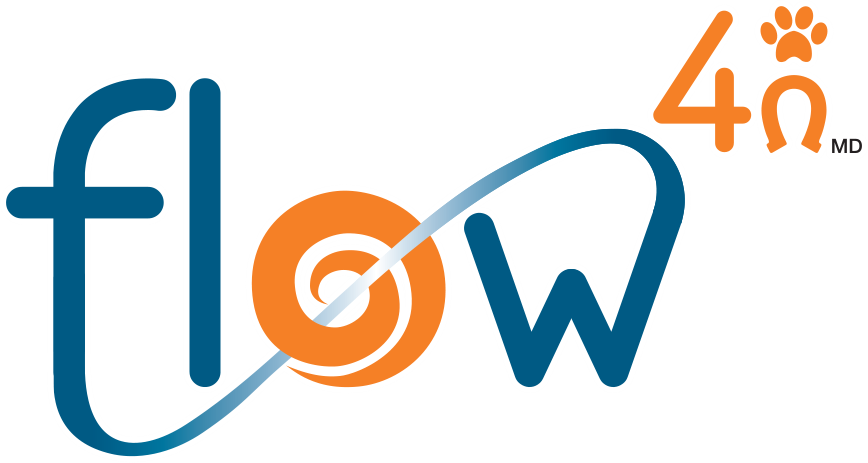
Flow4 is a preventative, rehabilitative and fitness approach inspired by several different techniques and spedific methods. It is unique, non invasive, gentle and adapatable to each animal's needs and specific circumstances. The main beneficial effects are seen on the musculoskeletal system but there are often positive consequences on the animals' behaviour (mental state), attitude and mood (emotional state).
The beginnings of Flow4?
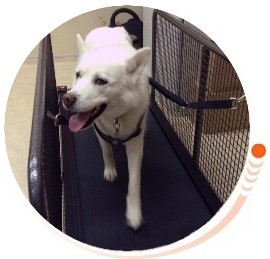 In recent decades, veterinary medicine has made great strides in diagnostic, surgical and medical treatment of mobility issues in animals. On the other hand, therapeutic follow up and support of pre/post surgical phases, of medical management of non-surgical cases, of preventive approaches or optimization of physical, mental, emotional or energetic well-being, is more recent.
In recent decades, veterinary medicine has made great strides in diagnostic, surgical and medical treatment of mobility issues in animals. On the other hand, therapeutic follow up and support of pre/post surgical phases, of medical management of non-surgical cases, of preventive approaches or optimization of physical, mental, emotional or energetic well-being, is more recent.
Undeniable, world wide recognition of the positive effects of functional rehabilitation in humans, led the veterinary world, primarily in Europe, as early as the 1970s, to consider the possibility that similar techniques could be equally beneficial to animals.
Since then, various methods and techniques, designed to promote optimal recovery, physical preparation for training and sports, as well as the optimization of the overall state of being, have been developed and adapted for use with animals, giving birth to complementary (holistic) veterinary medicines as well as a wide range of methods, therapies and techniques such as massage therapy, hydrotherapy, the Tellington TTouch Method, the Masterson Method and Reiki, just to name a few.
Each technique and method is effective and contributes to the wellbeing and recovery of each animal in its own way.
After almost 15 years of practice with animals, using several individual methods, it seemed clear to me that no individual method was a panacea, and that the adjusted combination of these different methods, produced better results.
Over time, I have continued to integrate a number of them and today; it is with great pride that I present to you Flow4 (or Flow to the power of the four legs/paws).
Flow4 is a re-adaptive and training approach inspired by several different techniques and specific methods. It is unique in its gentleness and adaptability.
This approach supports classic and complementary (holistic) veterinary medicine, sports medicine as well as physical training for working or sporting animals (such as dogs and horses). In a therapeutic capacity, it is practiced with appropriate medical oversight.
When needed, Flow 4 is synergetic and can achieve excellent results within the framework of an integrated, well-coordinated multidisciplinary approach (during a single intervention or by various stakeholders at different times), pharmacological treatments and other non-pharmacological therapies such as acupuncture, osteopathy or homeopathy.
For over 12 years, Animotion has worked with many veterinary stakeholders to refine and integrate its therapeutic approach as effectively as possible.
Why Flow4?
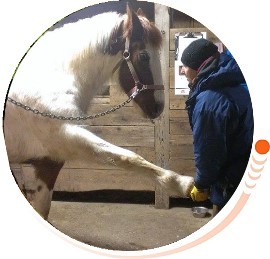 In optimal conditions, nature takes care of repairing damaged tissues within a certain time frame, be it from the effects of training, an injury, disease or accident. However, for any number of reasons, it can happen that these conditions or the context in which the animal is recovering are not conducive to proper healing. In such situations, rehab or training will progress more slowly or may not progress... an injury will take longer than normal to heal, reoccur or worse, it will not heal at all. A compensation pattern or postural issue will not resolve itself.
In optimal conditions, nature takes care of repairing damaged tissues within a certain time frame, be it from the effects of training, an injury, disease or accident. However, for any number of reasons, it can happen that these conditions or the context in which the animal is recovering are not conducive to proper healing. In such situations, rehab or training will progress more slowly or may not progress... an injury will take longer than normal to heal, reoccur or worse, it will not heal at all. A compensation pattern or postural issue will not resolve itself.
This is where Flow4 can make a difference...
How?
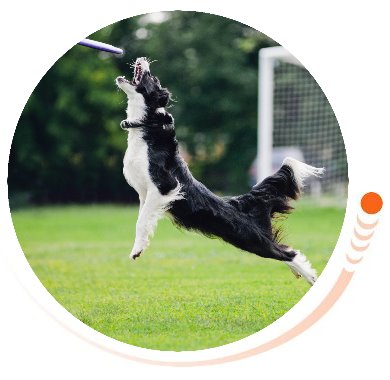 In optimum conditions nature will heal an injury in a particular time span.
In optimum conditions nature will heal an injury in a particular time span.
Morphology, physiology and metabolism of the structures involved in locomotion are in large part determined by a number of mechanical factors tied in to movement.
When a companion animal suffers from a musculoskeletal problem (injury, surgery, illness etc.) it will redistribute the forces necessary to maintain support and locomotion to the unaffected limbs, which consequently work harder than normal. In addition, a musculoskeletal problem is generally associated with a negative cascade effect on the body: reduction of physical activity, weight gain, compensatory weight bearing, joint stiffness, muscle wastage, increased pain and discomfort, depression, increased reactivity... This is a vicious circle that must be broken.
The athlete
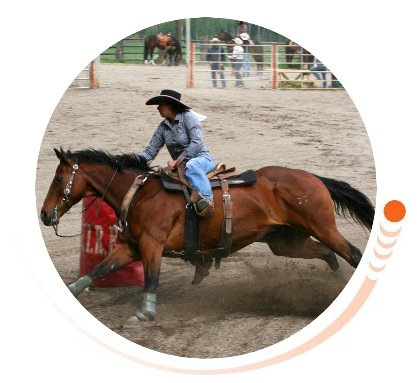 The athlete is trained to develop habitual movement patterns through repetitive exercise in order for these movements to become second nature. When the animal demonstrates signs of inadequate or undesirable postural habits or movements which, are noted by the trainer as needing to be "addressed", pursuing active repetitive training will likely only reinforce these habits and movements (as well as those of its rider, in the case of a horse) until the animal shows move visible signs of loco motor problems which by then, are likely to be more serious.
The athlete is trained to develop habitual movement patterns through repetitive exercise in order for these movements to become second nature. When the animal demonstrates signs of inadequate or undesirable postural habits or movements which, are noted by the trainer as needing to be "addressed", pursuing active repetitive training will likely only reinforce these habits and movements (as well as those of its rider, in the case of a horse) until the animal shows move visible signs of loco motor problems which by then, are likely to be more serious.
My goal with Flow4 is to optimise the animal's environmental and physical conditions in order to break this vicious circle and allow nature to do its work in the best possible timeframe and offer a preventative approach designed to avoid injuries and optimise function and performance.
Flow4 is part of a functional rehabilitation program that is primarily designed to be a well thought out and global approach to the affected animal, to treat the problem and to limit its repercussions on the rest of the body.
What are the benefits?
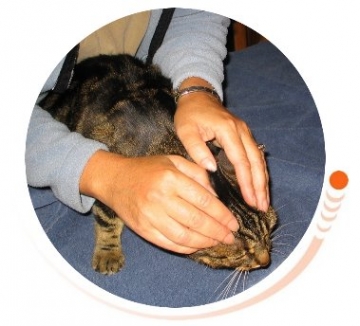 Flow4 approach is non invasive, usually used on dogs, cats and horses, and presents many therapeutic benefits such as :
Flow4 approach is non invasive, usually used on dogs, cats and horses, and presents many therapeutic benefits such as :
- Pain reduction
- Reduction of acute and chronic inflammatory responses
- Improvement of blood flow consequently improving trophicity (nutrition and development) of the tissues
- Reduction of adhesions and scar tissue
- Works to reduce muscle tensions and spasms
- Strengthens muscle and improves endurance
- Stimulates nervous system
- Improves muscle and nerve response
- Rehabilitates the proprioceptive system towards recovery of healthy movement
- Improves cardio-respiratory system capacity
When is Flow4 indicated?
 Most frequently called upon for:
Most frequently called upon for:
- Management of neurological problems
- Therapeutic follow up and support of pre/post surgical phases
- Therapeutic follow up and support through medical management of non surgical cases
- Treatment of various acute or chronic musculoskeletal problems such as tendonitis, sprains or strains, injured tendons/ligaments, muscle wastage/pain/tensions/spasms, bruising, contusions, prevention/management of proudflesh (hypergranulation) issues, back pain, joint problems, osteoarthritis, sacroiliac pain...
- Optimise healing of normal or non-union fractures
- Improve or maintain quality of life of animals suffering from degenerative disease such as arthritis and/or the consequences of compensatory postures and movements
- Improve or maintain quality of life of geriatric animals
- Improves performance in equine and canine athletes
- Support during return to fitness or training of equine and canine athletes of all levels
- Preventing recurrence of past injuries or for preparation and maintenance of physical fitness levels in sporting dogs and horses through regular routine follow ups and body work.
What happens during a Flow4 session?
A normal session usually lasts about an hour. During the first treatment, some time will be spent to introduce the animal to some light contact and bodywork in order to help your animal calm down and begin to establish a trusting relationship with him. Animals can become quite relaxed during a session with some almost falling asleep. Animals are never forcibly restrained and are allowed to move if they feel the need. You are present for the full duration of the session.
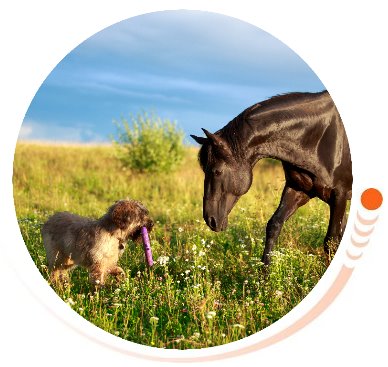 Whether your are seeking care for an animal that is injured, has undergone surgery, is an athlete in training or getting back into shape, your animal's current condition and needs are evaluated. Together with you, a review is done of environmental factors to adjust, if such is the case, as well as how to handle your animal during convalescence and/or rehab if there was injury/surgery. Some easy exercises can be taught to you in order to help the recovery along. A complete rehabilitation and/or retraining plan can be developed if needed, always taking into consideration your animal's condition and your ability to do the prescribed work.
Whether your are seeking care for an animal that is injured, has undergone surgery, is an athlete in training or getting back into shape, your animal's current condition and needs are evaluated. Together with you, a review is done of environmental factors to adjust, if such is the case, as well as how to handle your animal during convalescence and/or rehab if there was injury/surgery. Some easy exercises can be taught to you in order to help the recovery along. A complete rehabilitation and/or retraining plan can be developed if needed, always taking into consideration your animal's condition and your ability to do the prescribed work.